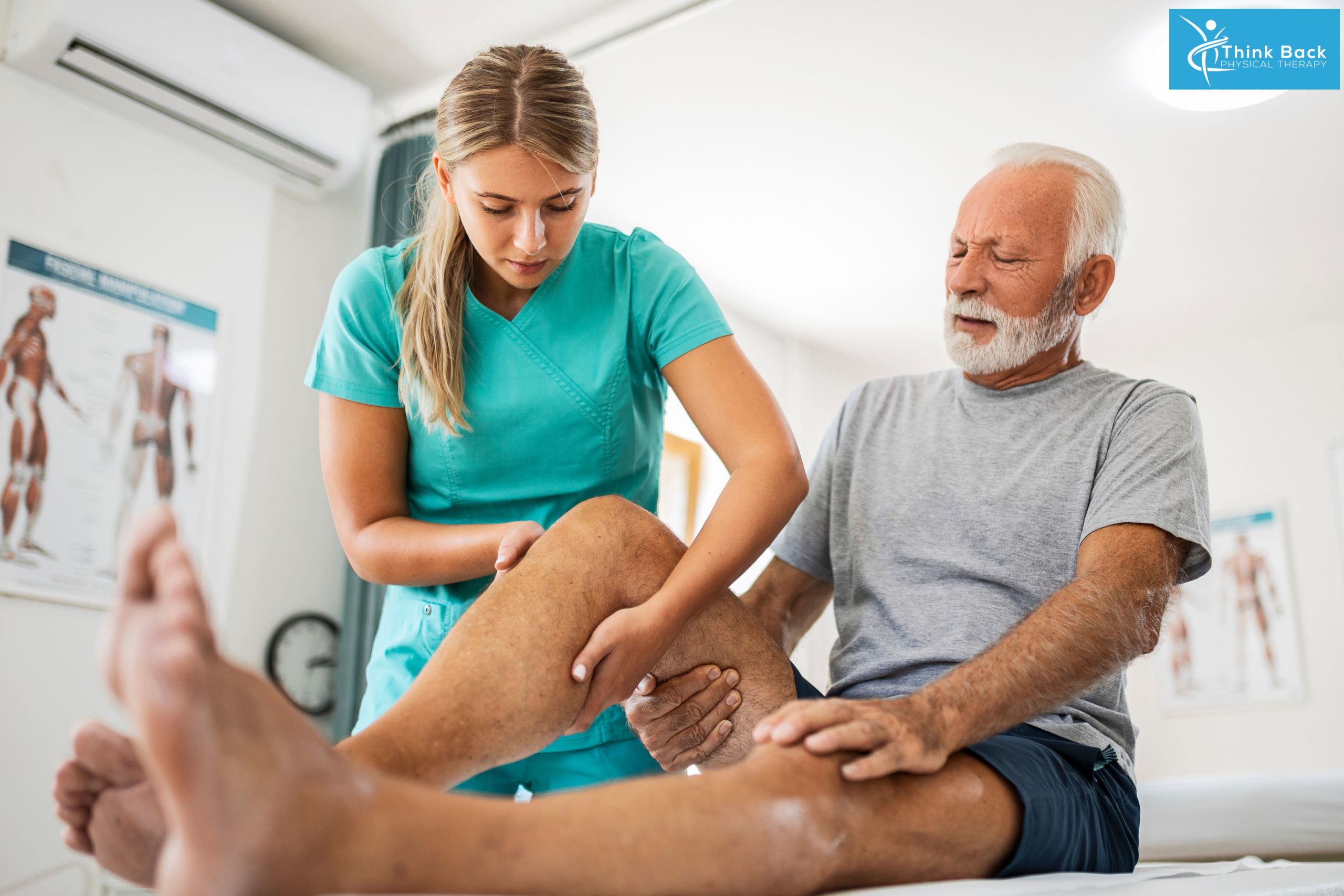The Benefits Of Physical Therapy For Pain Management
In modern medicine, physical therapy plays a very important step to help manage and reduce various types of pain. It generally focuses on making body movement easier, improving how the body functions, and improving your overall quality of life. Physical therapy works to find the main causes behind pain and tries to heal them.
It is not only about relieving the pain temporarily, but it also helps in the long lifetime. Whether someone has a long-term health problem or is recovering from an injury, physical therapy can make a big difference in reducing pain and improving body function. So, it is crucial to know the benefits of physical therapy for pain management.
Understanding Pain Management And Physical Therapy
Pain management refers to the practice of reducing or controlling pain, whether mild or chronic, to improve a person’s quality of life. This field encompasses a variety of approaches, including medicinal interventions, traditional procedures, and non-pharmacological methods, such as physical therapy. The goal of pain management is not only to provide relief from pain but also to improve the overall functionality of the body.
On the other hand, physical therapy is a type of health care that helps people regain the ability to move easily and remain mobile. Physical therapists use several methods such as exercise, behavioral therapy, and teaching patients to recover in an easy way from injuries, deal with long-term health problems, and prevent more physical problems from occurring.
When it comes to managing pain, physical therapy is a very important key factor. This helps find out what is causing the pain, helps the body heal better, and improves how patients feel overall.
When doctors use both pain management ideas and physical therapy together, they want to find out why the pain is there and make sure that patients receive holistic care that not only reduces pain but also helps them live longer. It also helps in feeling better and improving activity. They create plans that are designed for each individual and focus on getting the body to function optimally. Physical therapy is a big part of the overall approach to dealing with pain.
Signs Of A Bad Physical Therapist
It is important to recognize the signs of a poor or ineffective physical therapist to ensure that patients receive the best possible care. Some key factors of a bad physical therapist may include:
Lack Of Communication
If a physical therapist doesn’t communicate well with patients about their problems, treatment plans, how they’re doing, or any concerns they have in their body, it can make it harder for them to get better.
Disregard For Patient Input
If the therapist does not listen to the patient’s problem or does not take their concerns or ideas seriously, it means they are not focusing on what the patient needs, and their treatment plan may not work for that person.
Inadequate Knowledge Or Skill
If a physical therapist lacks knowledge or experience in this area, he or she may have difficulty providing relief to patients. It is important to stay updated about new treatments and have great skills to help patients recover well.
Poor Time Management
If the therapist is always late, rushes to appointments, or does not spend enough time with each patient, it may mean that they are not really focusing on or treating each individual properly. Not paying attention to what is needed.
Lack Of Empathy
If the therapist does not understand or care about how the patient feels and what’s their problem, it can make the space feel unpleasant and unsupportive, making it harder for the patient to get better.
Failure To Monitor Progress
If the therapist does not keep track of how the patient is doing or does not change the treatment plan as the patient gets better or worse, this may cause the therapy to not work as well.
The Benefits Of Physical Therapy For Pain Management
Physical therapy gives us many benefits for pain management, providing effective and holistic care to patients. Here are some important and common advantages of using physical therapy for pain management –
Targeted Pain Relief
Targeted pain relief means using the most appropriate and effective treatments to find out the exact causes of discomfort rather than using generic methods. This method helps provide better and long lasting relief to the people feeling uncomfortable by finding out the exact cause of the pain.
Improved Mobility
Physical therapists use improved mobility techniques to help manage pain, improve joint flexibility and muscle strength. By focusing on increasing the range of motion and flexibility, they mainly aim to reduce discomfort and increase the ease with which the individual can perform daily activities well. This healthy approach promotes better overall physical function and quality of life for people experiencing pain.
Reduced Dependency On Medications
One goal of physical therapists is to reduce reliance on medications for pain management. Through graded exposure to exercises and techniques, they attempt to reduce discomfort, allowing the individual to rely less on painkillers. This approach encourages the development of sustainable, natural strategies to relieve pain, promote overall well-being, and minimize potential side effects.
Preventing Further Injury
Physical therapists focus on preventing additional damage while managing pain. By incorporating some specific exercises and precautions, they work to ensure that individuals do not aggravate their injuries or cause additional damage, promoting a safe and effective recovery process.
Enhanced Functionality
Physical therapy uses several exercises and behavioral techniques to get the body to function better. This helps people to do their daily tasks more easily and without any hassle.
Personalized Approach
Physical therapists create specialized plans for each person based on their health history, how they live and how much pain they have. This ensures that the treatment plan fits the person perfectly and provides complete relief from their pain.
Long-Term Relief
Physical therapists prioritize long-term relief over pain management. Through targeted exercises and treatments, their goal is to create lasting solutions by reducing the frequency and intensity of pain over the long term. By addressing the root causes of discomfort, they promote patients’ continued well-being and improved quality of life.
Physical Therapy Pain Management Techniques
Physical therapists use a variety of special methods to get rid of pain and make it easier to get better. Some common techniques they use are exercise, massage, heat or cold therapy, and teaching better walking methods.
Manual Therapy
Manual therapy is a practical approach that is used in pain management to reduce discomfort and improve mobility. Techniques such as soft tissue mobilization, joint mobilization, and therapeutic massage help to reduce muscle tension, increase flexibility and improve overall physical function, thereby contributing to the overall relief and recovery process.
Therapeutic Exercises
Therapeutic exercise is an important component of pain management employed by physical therapists. These exercises are designed according to the needs of each individual and focus on increasing strength, flexibility and overall physical function of the body. By targeting specific muscle groups and areas of the body, therapeutic exercises aim to reduce pain, improve mobility, and promote long-term recovery and wellness.
Heat And Cold Therapy
Heat and cold therapy are usually used in pain management to provide relief and promote healing. Heat therapy works to increase blood flow, relax muscles and reduce stiffness, while cold therapy reduces swelling in the body, numbs the area and helps control pain. Both methods contribute to managing pain and facilitating the recovery process.
Dry Needling
Dry needling is a pain management technique used by physical therapists to reduce pain, stiffness and dysfunction in the body. It may help speed up the healing process and must be administered by a practitioner who is certified in Dry Needling.
Biofeedback
Biofeedback is a pain management method that is used by physical therapists to help individuals learn how to control body functions such as muscle tension, heart rate, and blood pressure. By providing real-time information, this technology enables patients to develop self-regulation skills, reduce pain, and promote relaxation and overall well-being.
All of these techniques are designed for the specific needs and conditions of each patient, creating a comprehensive approach to pain management in physical therapy, helping individuals recover, regain function, and improve their overall quality of life.
Conclusion
Physical therapy is very important for people who suffer from pain. It gives people a complete way to deal with their long standing problems. It uses special treatments, a variety of exercises, and teaching not only to stop pain but also to make people feel better and do more. This is a good way to help without any surgery or strong medication.
FAQ – The Benefits Of Physical Therapy For Pain Management
Is Pain Management The Same As Physical Therapy?
Pain management and physical therapy are interconnected but not the same. While pain management especially focuses on reducing pain, physical therapy employs a variety of techniques such as exercises and manual therapy, to improve overall physical function and reduce pain.
Does Physical Therapy Hurt?
Physical therapy may create some discomfort during certain treatments or exercises, but the goal is always to reduce pain and improve mobility.
What Type Of Exercises Are Involved In Physical Therapy?
Physical therapy involves a series of exercises created according to individual needs such as stretching, aerobic, strengthening and balance exercises aimed at muscle strength, improving flexibility, endurance and overall physical function.


